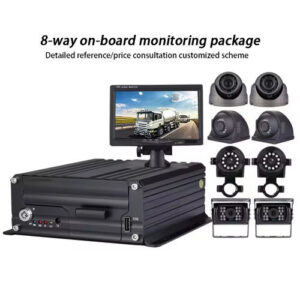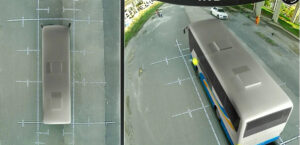Introduction to USB Camera Interfaces
USB camera interfaces are innovative technological solutions that facilitate the connection of cameras to computers and other devices through Universal Serial Bus (USB) ports. As a widely adopted standard for peripheral connectivity, USB has evolved since its inception in the mid-1990s, allowing easy integration of various devices. The notable advancement in USB technology has led to the seamless compatibility of cameras with computers, laptops, and network systems, enabling a broad range of functionalities across both consumer and enterprise settings.
In the contemporary business environment, USB cameras serve several essential functions. They are pivotal in video conferencing, providing high-quality video capture and transmission to enhance communication among remote teams. The plug-and-play advantage of USB camera interfaces allows users to easily connect the camera to their devices without the need for complicated installations or extensive configurations, ensuring a user-friendly experience. This feature is particularly beneficial in enterprise deployments, where efficiency and simplicity are paramount.
Moreover, USB camera interfaces are crucial in security applications. Many businesses now utilize integrated camera systems to monitor premises, employing USB technology to ensure real-time surveillance and data collection. The ability to connect multiple cameras to a single system expands the scope of surveillance solutions, thereby enhancing security measures in large enterprises. Additionally, this technology supports various data collection initiatives, where cameras can capture and analyze visual data to inform business decisions.
Overall, the significance of USB camera interfaces cannot be understated in today’s enterprises. By streamlining connections and offering versatile applications, USB cameras contribute to improved collaboration, enhanced security, and effective data utilization, marking them as essential tools in any modern business toolkit.
Understanding Compatibility: The USB Standard Explained
The Universal Serial Bus (USB) standard has evolved significantly over the years, resulting in various iterations, each designed to improve data transfer speeds and power delivery capabilities. The three most notable standards are USB 2.0, USB 3.0, and USB-C, each offering distinct advantages that are critical to enterprises considering USB cameras.
USB 2.0, introduced in 2000, supports a maximum data transfer rate of 480 Mbps and can provide up to 2.5 watts of power. Its widespread adoption ensures compatibility with many devices, making it a reliable choice for basic functionalities. However, the limited speed may restrict performance in high-resolution video applications typical of modern USB cameras.
In contrast, USB 3.0, launched in 2008, significantly enhances performance, offering data transfer rates of up to 5 Gbps and an increased power supply of up to 4.5 watts. This advancement allows for quicker uploads of high-definition video and better support for multiple connected devices. Enterprises relying on USB cameras for real-time monitoring or conferencing solutions greatly benefit from the improvements in speed and power provision that USB 3.0 offers.
USB-C, the latest standard, represents a significant leap forward with its reversible connector and increased capabilities. It supports even higher data transfer rates (up to 40 Gbps in the case of USB 3.2) and can deliver up to 100 watts of power, enabling comprehensive pairing of USB cameras with various devices without the need for separate power supplies. Its versatility in managing data and power positions USB-C as the ideal choice for enterprises that prioritize future-ready technology and device interoperability.
When selecting USB cameras, enterprises must consider these standards’ compatibility to ensure seamless integration across existing systems and platforms. Factors like device interoperability can greatly influence productivity outcomes, making the understanding of USB standards an essential consideration in deployment strategies.
Plug-and-Play Advantages of USB Cameras
One of the pivotal advantages of USB cameras is their plug-and-play functionality, which streamlines installation processes significantly. Unlike traditional cameras that may require complex configurations and driver installations, USB cameras are designed for immediate usability upon connection. This feature is especially beneficial in enterprise environments where rapid deployment is crucial. When a USB camera is plugged into a compatible device, the system automatically recognizes the hardware, thereby eliminating the need for additional software or hardware configuration.
The plug-and-play capability ensures that users can set up their USB cameras swiftly, leading to enhanced operational efficiency. For enterprises, this translates to minimal downtime, enabling employees to focus on their tasks rather than troubleshooting equipment or waiting for lengthy installation processes. Furthermore, in scenarios where multiple cameras are required, the ability to connect them effortlessly can have a significant positive impact on productivity. IT departments benefit from reduced complexity in managing devices, as fewer steps are required to get the equipment up and running.
In addition, USB cameras are often favored for their compatibility with a wide range of devices and operating systems. This versatility allows enterprises to use these cameras with laptops, desktop computers, and various conferencing setups, enhancing communication and collaboration across teams. By enabling quick and easy setup, USB cameras facilitate smoother workflows and contribute to a more agile workplace. Overall, the plug-and-play feature of USB cameras not only simplifies installation but also plays a crucial role in improving the overall efficiency and effectiveness of enterprise deployments.
Benefits of USB Cameras in Enterprise Deployment
USB cameras have increasingly become a preferred choice for enterprises due to their numerous advantages, particularly in terms of cost-effectiveness, versatility, and ease of integration within existing IT infrastructures. One of the primary benefits is the affordability of USB cameras. Compared to traditional camera systems that may require complex installations, USB cameras offer a budget-friendly solution without compromising on quality. This makes them an attractive option for businesses looking to enhance their video capabilities without incurring significant expense.
The versatility of USB cameras allows for a wide range of applications within an enterprise setting. They can be effectively utilized for video conferencing, providing clear visual communication for remote teams. Additionally, USB cameras are valuable for surveillance purposes, helping organizations monitor secure areas and uphold safety standards seamlessly. Document scanning is another notable application; with a USB camera, businesses can easily digitize physical documents, facilitating increased efficiency in record-keeping and information sharing.
Scaling is another significant advantage presented by USB cameras. Enterprises often grow and evolve, requiring adaptable solutions that can keep pace with changing needs. USB cameras can be effortlessly added to existing setups, allowing for an easy expansion of camera networks without the need for extensive reconfiguration. This plug-and-play functionality minimizes downtime and ensures a seamless user experience, enhancing productivity across teams.
Furthermore, USB cameras can integrate smoothly into existing IT infrastructures. The wide compatibility with various operating systems and software platforms allows for a swift deployment process. This integration promotes operational efficiency, as employees can leverage these devices without extensive training. In summary, the combination of cost-effectiveness, versatility, scaling ease, and compatibility positions USB cameras as a crucial asset for enterprises aiming to improve their technological capabilities.
Real-World Applications of USB Cameras in Enterprises
USB cameras have emerged as vital tools in various enterprise sectors, offering unparalleled functionality in enhancing communication, security, and operational efficiency. One of the most prominent areas of application is in the field of education. Institutions are increasingly integrating USB cameras into their teaching methodologies. These cameras facilitate remote learning by allowing instructors to broadcast lectures and demonstrations in real-time, thereby fostering a more engaging classroom experience. The plug-and-play nature of USB cameras simplifies their adoption, enabling educators to set up high-quality video feeds easily during virtual classes.
In healthcare, USB cameras play a crucial role in telemedicine. Physicians utilize these devices to conduct remote consultations, allowing for patient assessments without the need for physical visits. This capability not only enhances access to healthcare services but also streamlines the workflow within medical facilities. With compliance to privacy regulations, USB cameras ensure a secure connection between patients and healthcare providers, resulting in better communication and patient care.
Security is another domain where USB cameras have proven essential. Many businesses install these cameras as part of their surveillance systems to monitor premises and deter theft. The ability to connect USB cameras to computers provides significant flexibility, as data can be accessed and reviewed promptly. Moreover, integrated software solutions often allow for real-time monitoring, which helps increase the response time in case of an emergency.
Lastly, the rise of remote work environments has seen USB cameras become indispensable for team collaboration. They are used in video conferencing tools to enable clear, high-definition communication among colleagues, regardless of their geographical locations. This connectivity enhances productivity, as teams can share ideas more efficiently and maintain cohesion, even from afar. The ease of setting up a USB camera makes it an ideal choice for organizations looking to improve internal communication and team dynamics.
Challenges and Considerations when Using USB Cameras
The deployment of USB cameras in enterprise settings presents several challenges that organizations must navigate to ensure optimal performance. One of the primary issues is compatibility with older hardware. Many enterprises still utilize legacy systems, which may not support the latest USB specifications or the power requirements of advanced cameras. This can lead to connectivity problems that hinder the cameras’ functionality, rendering them ineffective for intended applications. Conducting thorough compatibility assessments before implementation can mitigate such risks, enabling the selection of appropriate models that are likely to function across various hardware configurations.
Another significant consideration is the software capabilities that accompany USB cameras. While many manufacturers offer intuitive software, not all solutions are created equal. Some may lack essential features, such as multi-camera support or advanced analytics capabilities, which can limit an organization’s ability to leverage the full potential of their camera systems. Additionally, the integration of USB cameras with existing software platforms may require additional customization, potentially resulting in increased costs and extended deployment timelines. Enterprises should evaluate software options meticulously, ensuring that chosen solutions align with their operational needs.
Bandwidth concerns also play a critical role in the deployment of USB cameras, particularly in environments with high demand, such as surveillance in large facilities. USB cameras can consume substantial bandwidth depending on their resolution and frame rate, leading to potential network strain. This situation can compromise video quality or result in lag, inevitably affecting the effectiveness of surveillance operations. To address this, enterprises should consider deploying robust network solutions that can accommodate increased traffic or employing compression technologies to optimize bandwidth usage. By proactively addressing these challenges, organizations can enhance the functionality and reliability of their USB camera installations.
Future Trends in USB Camera Technology
As we look toward the future, USB camera technology is expected to undergo significant advancements, making these devices even more integral to enterprise applications. One of the most anticipated trends is the shift toward improved resolution. With businesses increasingly relying on high-definition video for communication and security, the demand for USB cameras that support 4K and even 8K video resolution will likely surge. This enhancement will not only elevate video conferencing quality but also support detailed surveillance tasks, ensuring organizations can capture essential information with clarity.
Another area poised for development is enhanced low-light performance. As enterprises operate in varied lighting conditions, from bright offices to dimly lit areas, the capability of USB cameras to adapt to such environments will become crucial. Innovations like larger sensor sizes and advanced image processing algorithms are expected to enhance low-light performance, allowing for clearer images in reduced visibility. This feature will be especially important for security applications, where effective monitoring is necessary even during night hours.
Additionally, the integration of artificial intelligence (AI) within USB cameras is on the rise. AI capabilities can facilitate advanced functionalities such as facial recognition, motion detection, and automated monitoring systems. These features will not only improve security measures but also add value in sectors like retail, where insights derived from customer behavior can drive business decisions. As organizations strive to enhance efficiency and security, the incorporation of AI into USB camera technology will lead to more sophisticated solutions that meet the evolving demands of enterprises.
In summary, the future of USB camera technology is bright, with anticipated advancements in resolution, low-light performance, and AI integration. These trends are poised to transform how organizations deploy USB cameras, ensuring that they align with their operational needs and the demands of a rapidly changing landscape.
Selecting the Right USB Camera for Your Enterprise
When it comes to deploying USB cameras in an enterprise environment, selecting the appropriate model is critical to ensure that the equipment meets the needs of the organization. Various factors must be considered, encompassing resolution, frame rate, compatibility with existing systems, and budgetary constraints.
Firstly, resolution is a pivotal factor that can significantly impact the quality of video captured. For general conferencing purposes, a camera with 720p resolution might suffice; however, for applications requiring detailed image recognition, such as security surveillance or high-definition broadcasting, investing in 1080p or even 4K capabilities would be prudent. Higher resolution cameras tend to provide clearer images, which is essential for effective communication and monitoring.
Frame rate also plays an important role in the usability of USB cameras. Typically, a frame rate of 30 frames per second (fps) is deemed satisfactory for standard video calls. However, for scenarios demanding smooth motion capture, such as video production or surveillance, a higher frame rate may be beneficial. It is advisable to evaluate the requirements of your specific use case before making a decision in this area.
Moreover, compatibility with existing systems should not be overlooked. Ensuring that the USB camera integrates smoothly with the current technology stack is essential to avoid operational disruptions. It is advisable to review the camera’s specifications and consider any software that may be required for optimal performance.
Finally, budget constraints will play a significant role in the selection process. While it might be tempting to opt for the cheapest option, it is crucial to evaluate whether the lower cost correlates with subpar quality or limited features. Weighing the long-term benefits against upfront costs can lead to a more informed choice.
Conclusion
In today’s rapidly evolving digital landscape, the adoption of USB camera technology offers significant advantages for enterprises seeking to enhance their operational efficiency and collaborative capabilities. Throughout this discussion, key benefits of USB cameras have been highlighted, primarily focusing on their compatibility and plug-and-play functionality, which are essential elements for businesses aiming for seamless integration within their existing systems.
The versatility of USB cameras allows them to be utilized across a wide range of applications, including video conferencing, remote monitoring, and live streaming, which are increasingly vital in modern work environments. Their straightforward connection process ensures that businesses can quickly deploy these devices without the need for extensive technical support or complicated installations, thereby reducing downtime and operational disruptions.
Moreover, as organizations continue to embrace remote work and global team collaborations, the importance of high-quality video and audio communication cannot be understated. USB cameras facilitate this by providing reliable performance and clear, real-time interactions, which are crucial for effective teamwork and decision-making. By leveraging USB camera technology, enterprises are not only staying competitive but also fostering an innovative culture that encourages the sharing of ideas and collaboration across different regions.
In conclusion, integrating USB cameras into enterprise workflows is not just a matter of keeping up with technological advancements; it is a strategic move towards enhancing communication, collaboration, and ultimately, productivity. By embracing these tools, businesses can maximize their potential, create more engaging environments, and ensure they remain at the forefront of their industry in an increasingly digital world.






